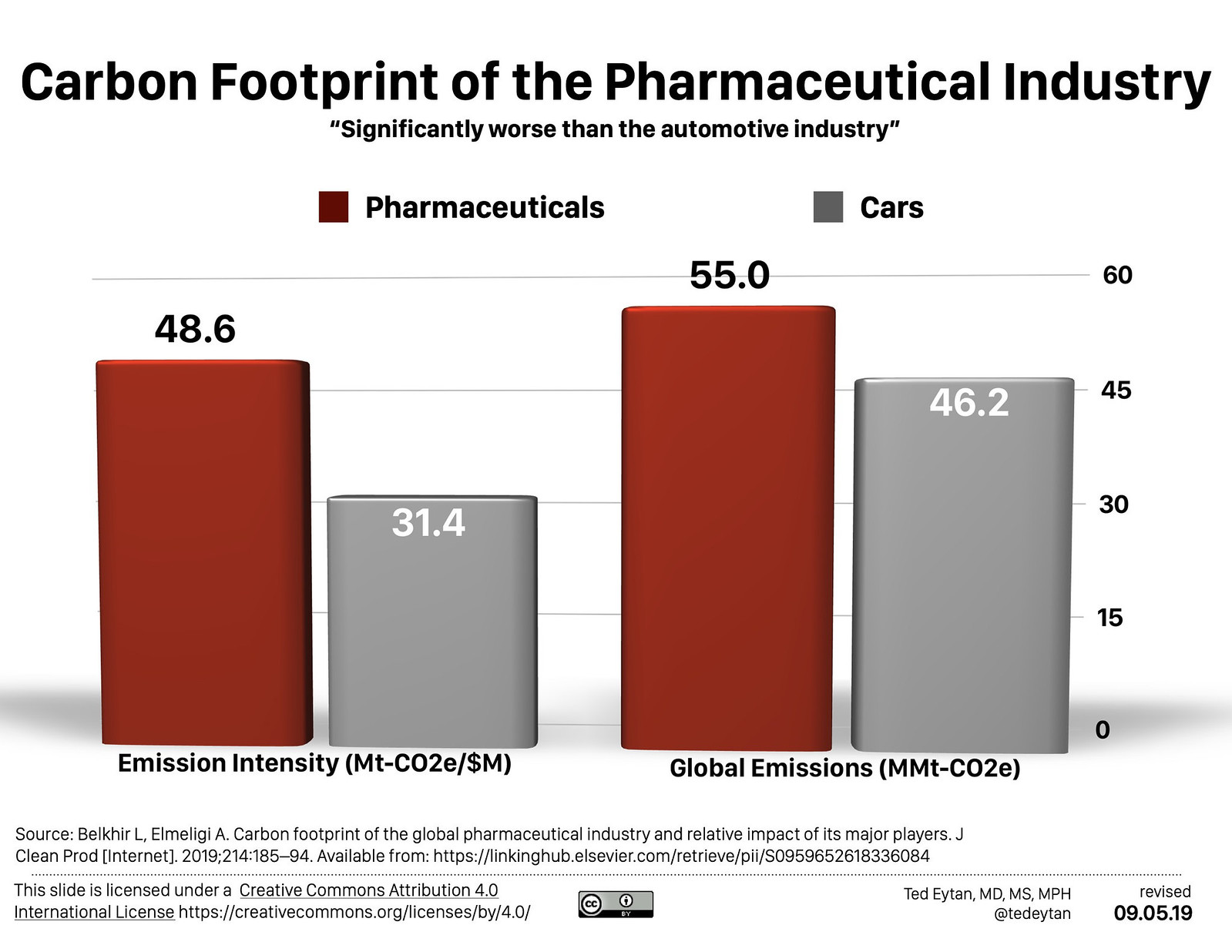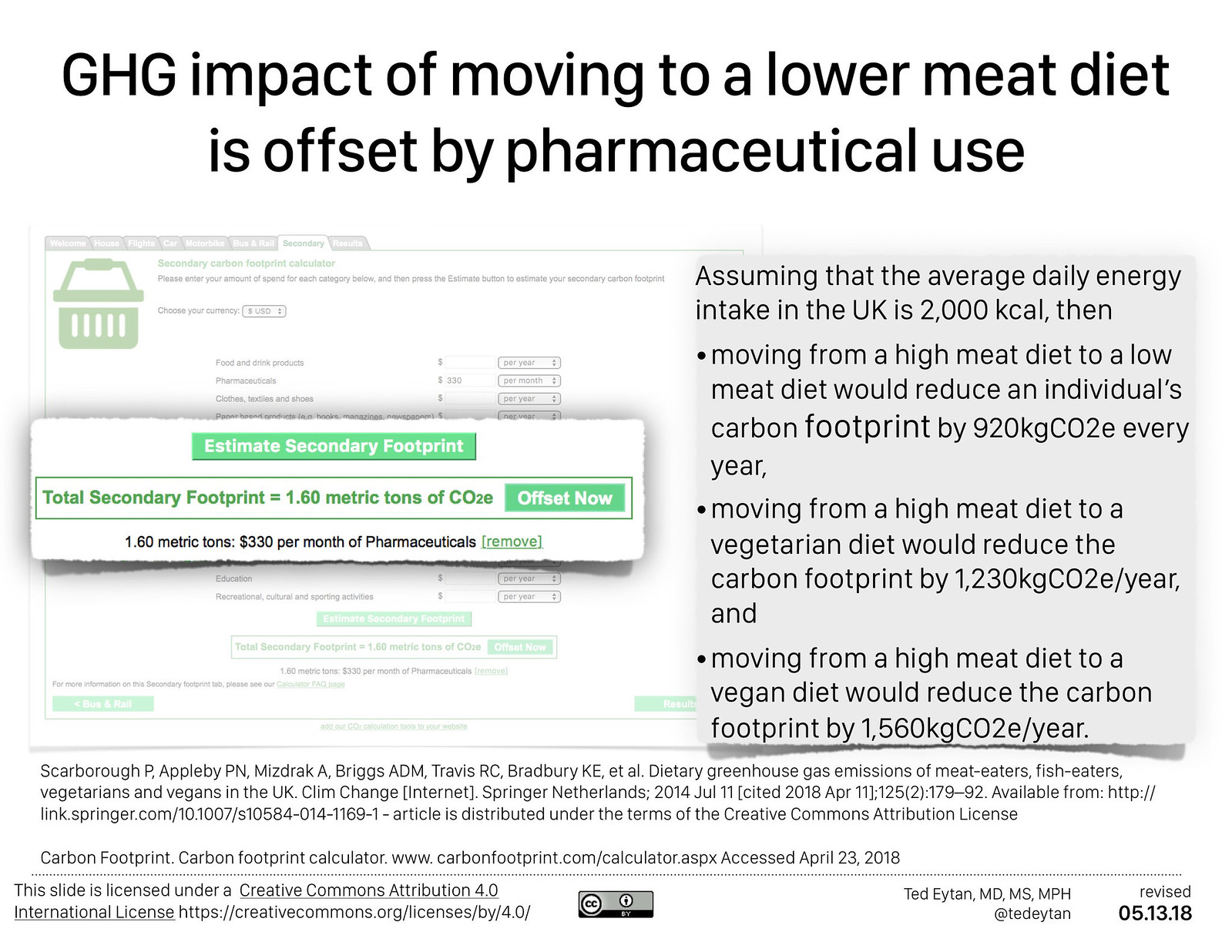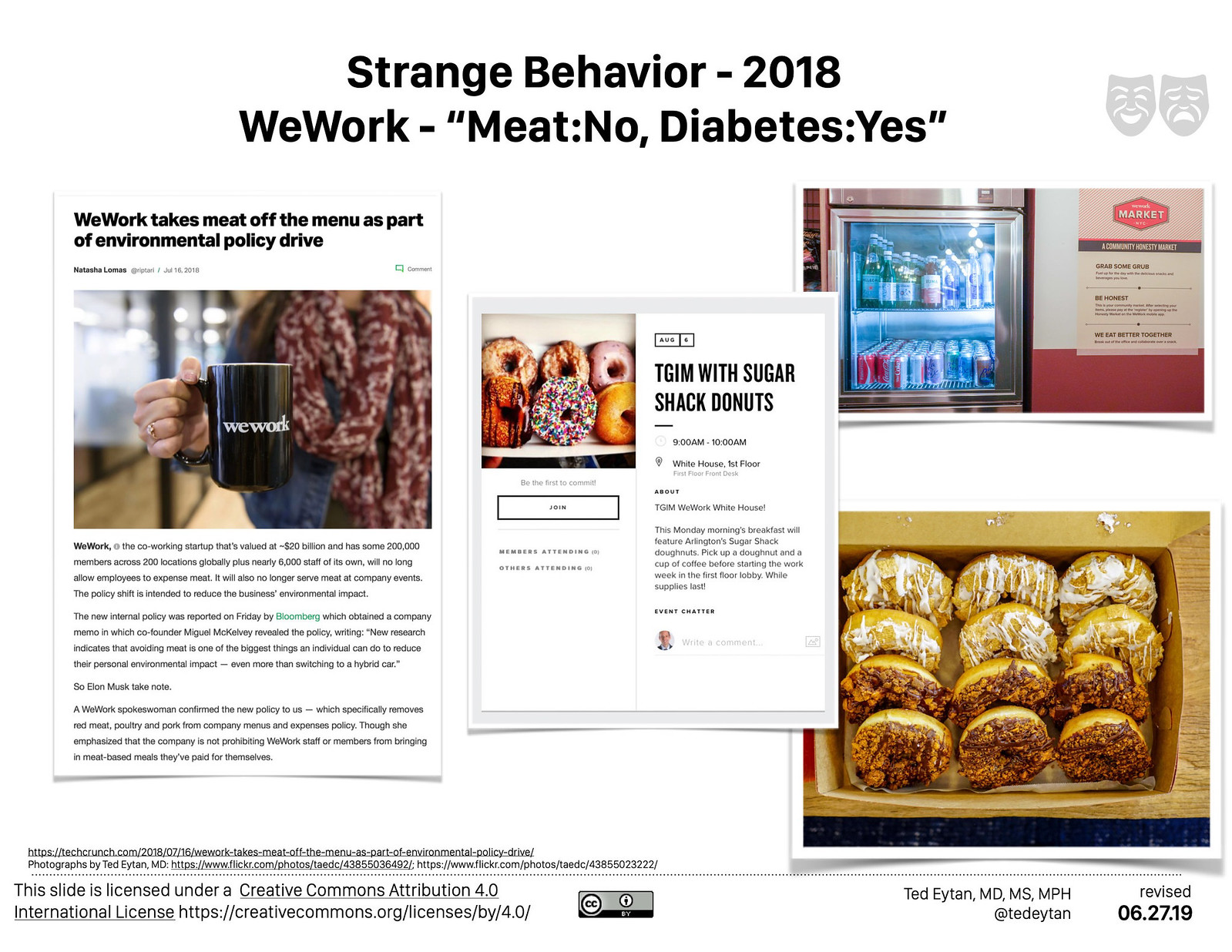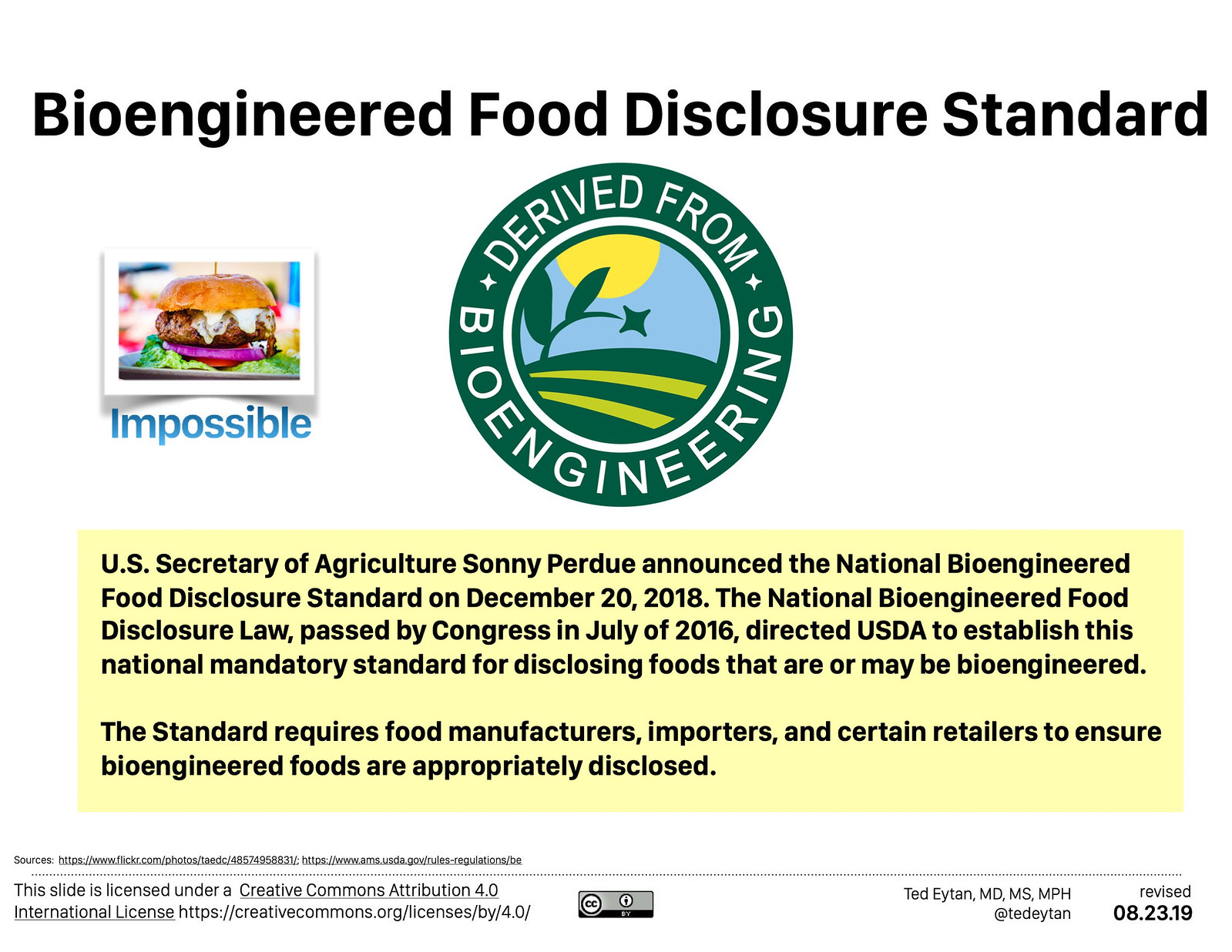
Source: Belkhir L, Elmeligi A. Carbon footprint of the global pharmaceutical industry and relative impact of its major players. J Clean Prod [Internet]. 2019;214:185–94. (View on Flickr.com)
I was highly interested in reading this paper because I have informally worked to understand the greenhouse gas (GHG) emissions of the pharmaceutical industry through their own web sites, and usually leave confused and uninformed. Apparently, it’s not just me.
This analysis includes the use of datasets that are not publicly available for the major pharmaceutical companies that report their emissions. The authors also compared absolute number of emissions and relative emission intensity, to take growth and revenue into account.
Unexpectedly, we found that the Pharma industry, on average, is a higher intensity emitter than the automotive industry … Also, we have found a much greater variability among the Pharma industry than the automotive industry.Belkhir L, Elmeligi A. Carbon footprint of the global pharmaceutical industry and relative impact of its major players. J Clean Prod [Internet]. 2019;214:185–94.
The authors further cite a lack of transparency that I also found in my informal review:
…overall the environmental performance of the pharmaceutical sector in general, and their GHG emissions in particular, are much worse than generally portrayed by the industry’s greenwashing tactics and their sustainability reports.Belkhir L, Elmeligi A. Carbon footprint of the global pharmaceutical industry and relative impact of its major players. J Clean Prod [Internet]. 2019;214:185–94.
How this is related to diet and a Sustainable Diet
The average US person who has diabetes requires almost $5000 USD/year of diabetes medications. This translates into 2.01 metric tons CO2/year emissions, exceeding the amount of emissions they might save by going vegan in one year, for example.

If a person was able to reverse their (Type II) diabetes or otherwise reduce their medication use, their carbon footprint would go down, significantly so. The American Diabetes Association has amended their lifestyle recommendations from January, 2019 to suggest exactly that:
For select adults with type 2 diabetes not meeting glycemic targets or where reducing glucose-lowering medications is a priority, reducing overall carbohydrate intake with low- or very low carbohydrate eating plans is a viable approach.American Diabetes Association. 5. Lifestyle Management: Standards of Medical Care in Diabetes—2019. Diabetes Care [Internet]. 2019 Jan 1 [cited 2019 Sep 5];42(Supplement 1):S46–60.
Unfortunately, a significant amount of cognitive dissonance exists inside and outside of the medical profession, resulting in policies like this:

The interesting case of Bayer
Bayer is a conglomerate of the most interesting kind in this space. It manufactures:

- Pharmaceuticals
- Medical Devices
- Agricultural commodities (including soybeans of the GMO variety, perhaps ones of the kind used in today’s ultra-processed artificial-food burgers, as well as herbicides declared probable carcinogens by the World Health Organization (@who))
I might call this the trifecta of chronic disease creation and mitigation all at the same time.
Bayer also does not break out its GHG emissions by division, which gives it an extremely high emissions intensity compared to the other companies who report, about 4.2 times greater than the pharmaceutical sector.
To make matters worse, Bayer reports and tracks its emission intensity in terms of tons ofCO2e per ton ofmanufactured sales volume (Bayer, 2015, 2018), regardless of whether the man- ufactured goods are pharmaceutical products, medical devices or agricultural products. In other words, a ton of fertilizer and a ton of aspirin, are equally accounted for with respect to the level of emissions they generate.Belkhir L, Elmeligi A. Carbon footprint of the global pharmaceutical industry and relative impact of its major players. J Clean Prod [Internet]. 2019;214:185–94.
Climate change is a threat to human health. Physicians have an important role to play in understanding and supporting pathways to healthy people and healthy planet, not one or the other.
References
- Belkhir L, Elmeligi A. Carbon footprint of the global pharmaceutical industry and relative impact of its major players. J Clean Prod [Internet]. 2019;214:185–94.
- American Diabetes Association. 5. Lifestyle Management: Standards of Medical Care in Diabetes—2019. Diabetes Care [Internet]. 2019 Jan 1 [cited 2019 Sep 5];42(Supplement 1):S46–60.
2 Comments
[…] really help the ecosystem as drug companies are one of the biggest polluting industries! Check out THIS article for more on the emission of the pharmaceutical industry. As we have shown with this small sample of […]
[…] really help the ecosystem as drug companies are one of the biggest polluting industries! Check out THIS article for more on the emission of the pharmaceutical industry. As we have shown with this small sample of […]